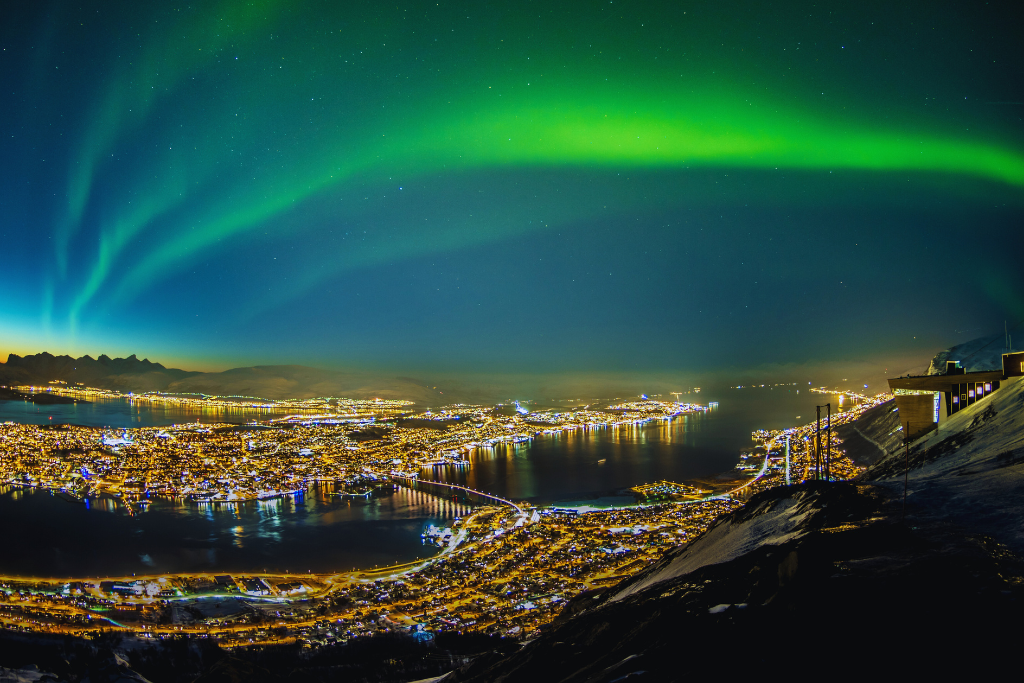Just when you think we have a good grasp of the beauty that exists around us, some places in this world just seem so unbelievable. From the Waitamo cave of New Zealand to the Kuang Si Falls, in Laos. It sure does look like we have not even scratched the surface of the beauty that exists in our world. Here are 15 of some of the most Surreal places in the World.
15. Waitomo Caves, New Zealand
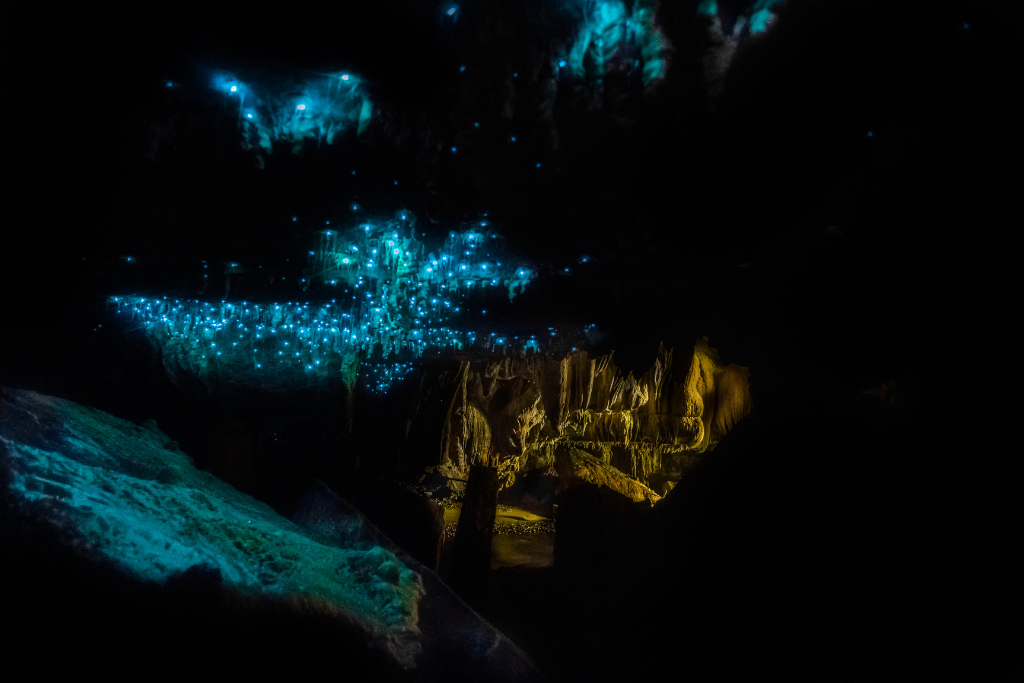
New Zealand is often nicknamed the “paradise of the pacific ”, which explains why it’s home to one of the most magical light shows in the world, the Glowworm Grotto. The cave is a stunning natural phenomenon – with thousands of glow worms that light up the darkness with their fairytale blue glow. The Glowworm Grotto is a chamber that is illuminated by the bioluminescent larvae of Arachnocampa Luminosa. These larvae emit a greenish-blue light that attracts small insects, which they then capture and devour. Aside from the beauty, the caves are also full of drama and history. For centuries, they were used as a hideout by Maori warriors, and later became a filming location for the Lord of the Rings movies.
14. Underwater Waterfall, Mauritius
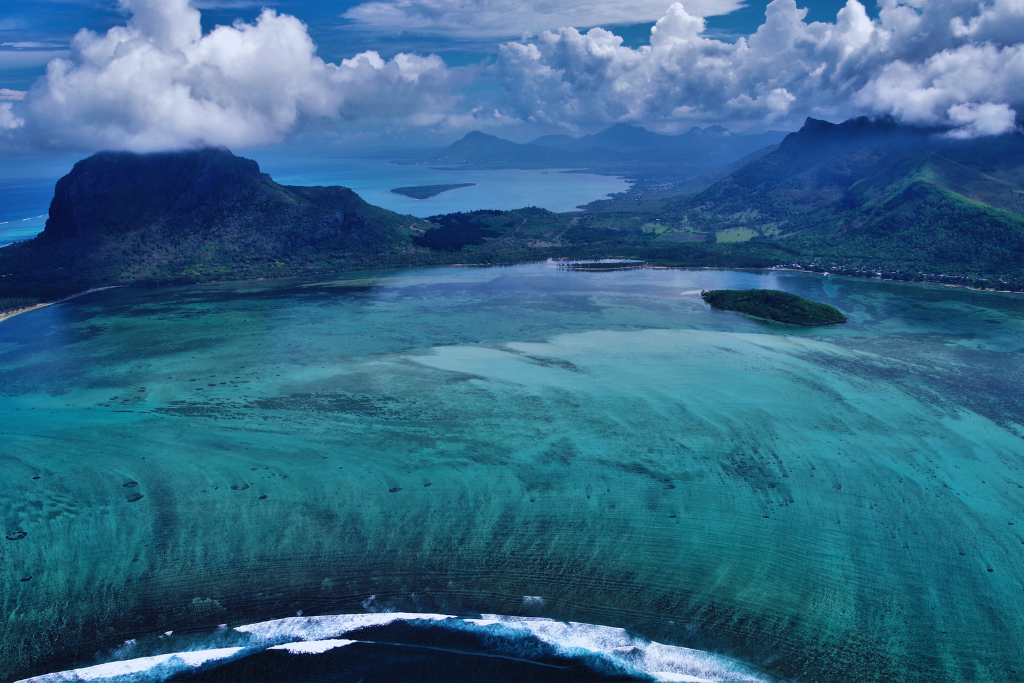
Mauritius is known for its delicious tea, white beaches, and some of the most beautiful granite cliff islands in the world. Located off the coast of Mauritius, lies what seems to be the Mos unbelievable underwaterfall. This phenomenon is actually an optical illusion, as an actual underwaterfall is not possible. This phenomenon is caused by a dense concentration of sand and silt that has been carried downstream by the currents of the Indian Ocean. As the sand and silt reach the edge of a deep underwater cliff, it suddenly drops off into an abyss, creating a powerful waterfall effect. The Underwaterfall is a beautiful sight to behold, and it is also an important source of nutrients for the marine life that inhabits the surrounding waters. Every day, thousands of fish and other sea creatures come to the Underwaterfall to feed on the nutrient-rich water that flows down from the surface. In turn, these creatures help to support the delicate balance of life in the Indian Ocean.
13. Wadi Rum, Jordan
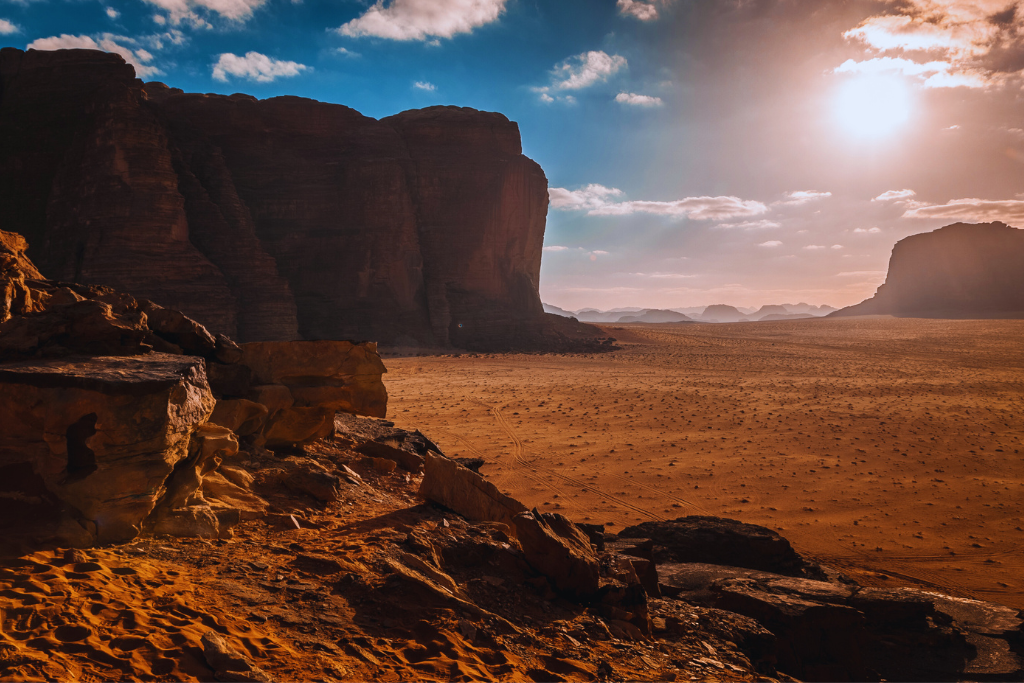
Renowned by the locals as the Valley of the Moon, Wadi Rum is a valley cut into the sandstone an granite rock in southern Jordan. It is near the border to Saudi Arabia, and about 60 km (37 mi) to the east of the city of Aqaba. This red landscape is regarded as the largest wadi in Jordan. Wadi Rum has been inhabited by many human cultures since prehistoric times, with many cultures–including the Nabataeans leaving their mark in the form of petroglyphs, inscriptions, and temple ruins. Currently, the majority of its inhabitants are made up of the Zalabieh Bedouins who arrived in the region around 1980 With its reddish sand and mountains, Wadi Rum is a Hollywood favorite for films set to depict Mars. So far it has served as the backdrop for many Hollywood films like Transformers: Revenge of the Fallen, The Martian (2015), The Last Days on Mars (2013), Red Planet (2000), Mission to Mars (2000), etc No wonder this Jordanian wadi is a year round hotspot for lovers of adventure and nature.
12. Studlagil Canyon, Iceland
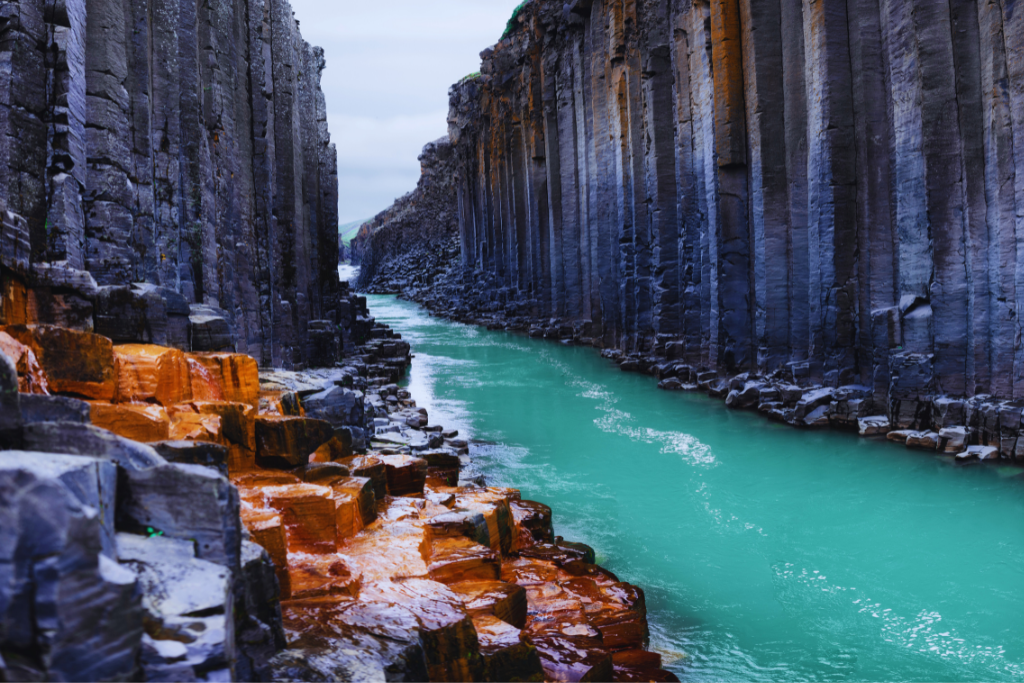
In the eastern region of Iceland, you would find a beautiful ravine called Studlagil that has a steep side known for its columnar basalt rock formations and blue-green river that runs through it It became an unexpected tourist sensation after being shown in a WOW air airline brochure in 2017. The rock formation is 30 meters tall. The river Jökla runs through the ravine and the water level decreased by 7 to 8 meters due to the nearby Hydropower Plant, which opened in 2009. The color of the river differs between seasons, from blue – green during the summer to gray – brown when the dam is on overflow status and when snow melts into the river. This place is otherworldly, and an unbelievable sight to behold.
11. Socotra Island, Yemen
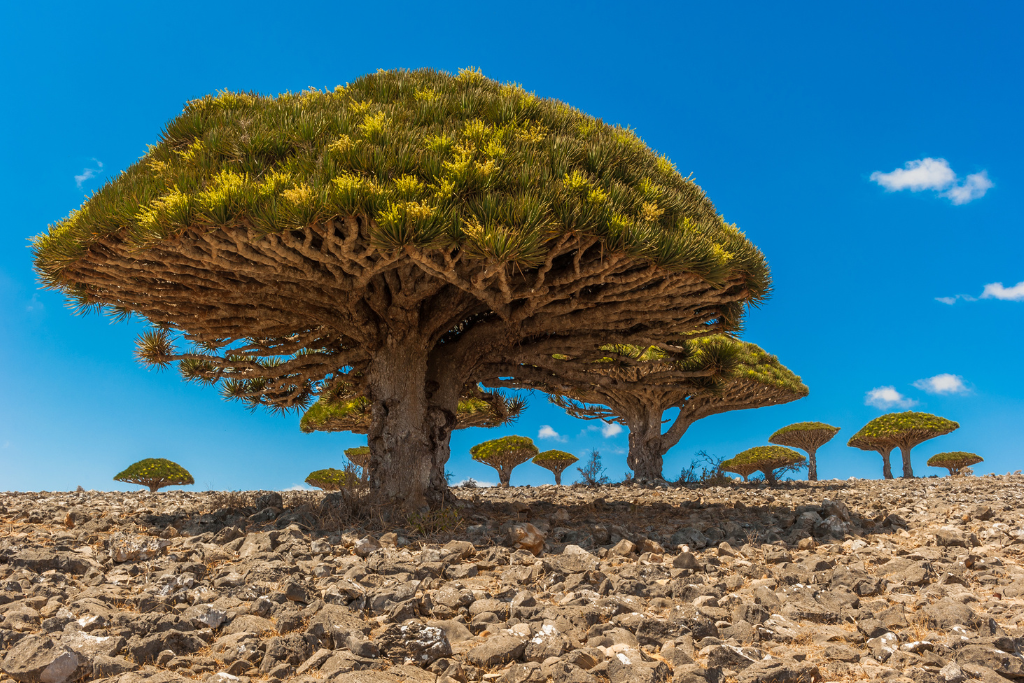
Socotra is a Gorgeous island of the Republic of Yemen in the Indian Ocean, Lying between the Guardafui Channel and the Arabian Se Socotra is the largest of the four islands in the Socotra archipelago. It lies 380 kilometers (240 mi) south of the Arabian Peninsula, but is considered to be part of Africa The island is isolated and home to a high number of endemic species including a thir of its plant life. It has been described as “the most alien-looking place on Earth. Before being recognised in 2008 as a UNESCO World Heritage Site, a team of United Nations biologists conducted a survey of the archipelago’s flora and fauna. They counted nearly 700 endemic species, found nowhere else on earth; only New Zealand, Hawaii, New Caledonia, and the Galápagos Islands have more impressive numbers.
10. Lençóis Maranhenses, Brazil

The Lencois Maranhenses is a national park located in the Brazilian state of Maranhao (maranyaow). The area is known for its stunning landscapes, which are characterized by vast expanses of white sand dunes and crystal-clear blue lakes. The sand dunes are up to 40 meters high. The dunes were formed by the wind and the rain. When it rains, the water collects in the depressions between the dunes and forms temporary lakes. These lakes are called “lencois”, which means “bedsheets” in Portuguese. The Lencois Maranhenses is home to a diverse range of animals, including lizards, snakes, rodents, and several species of birds. Despite its remote location, Lencois Maranhenses is popular destination for both tourists and scientists. Visitors to the park can enjoy hiking, camping, and canoeing.
9. Vatnajokull ice cave, Iceland
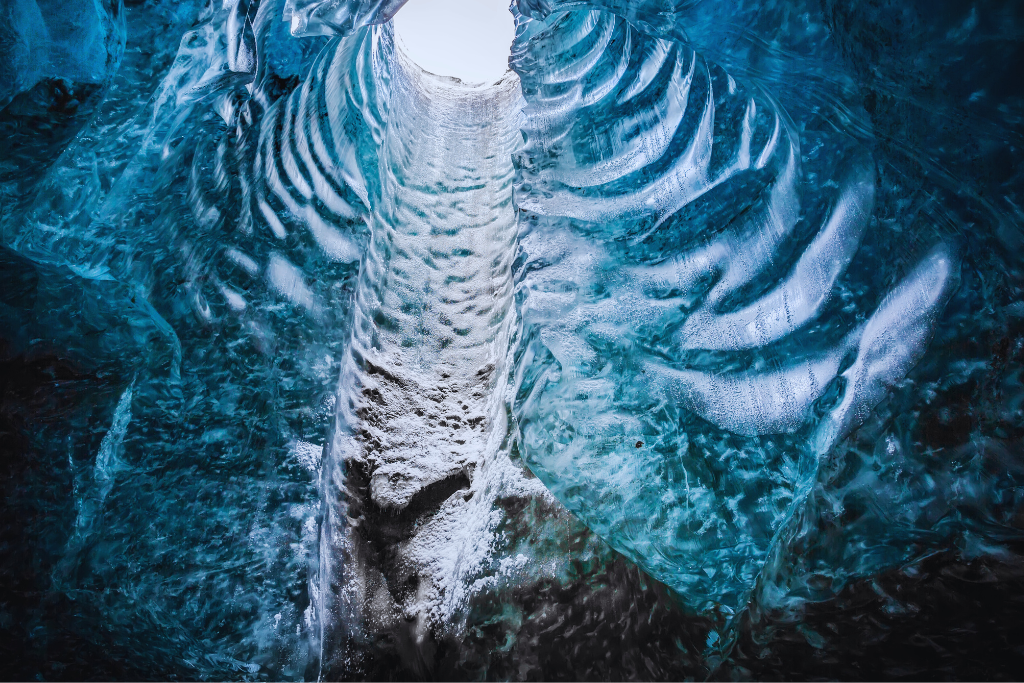
Atnajökull, Iceland’s largest ice cap, is a looming mass of glaciers, snow, and ice. And beneath its surfaces are a series of spectacular ice caves. The caves are otherworldly, with their high ceilings and blue-hued walls. And when the sunlight hits the ice just right, it casts a magnificent glow throughout the cave. The caves are formed when water seeps through cracks in the glacier, and they vary in size from small chambers to vast caverns. These caves are constantly changing, as the surrounding glaciers move and melt. As a result, they are only accessible for a few months out of the year when Visitors have a unique chance to experience the power of glacial ice.
8.. The Dolomites, Italy
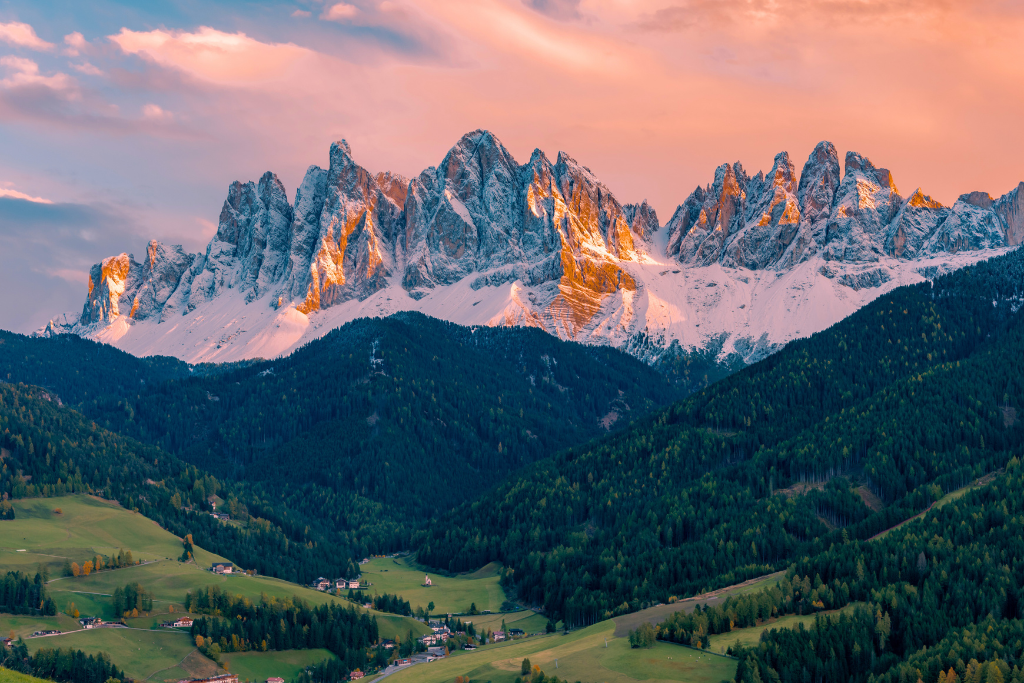
The Dolomites are a mountain range located in northeastern Italy that form part of the Southern Limestone Alps and extend from the River Adige in the west,and to the Piave Valley in the east Their amalgamation of lush forest, crystal clear lakes and mountain ranges give you a tingly feel of breathlessness. With the sound of gently moving waters, fresh clean breeze, birds quirking and beautiful meadows of flowers, The Dolomites is beyond gorgeous It is renowned for skiing in the winter months and mountain climbing, hiking, cycling, and BASE jumping, as well as paragliding and hang gliding in summer and late spring.
7. Masai Mara National Park, Kenya
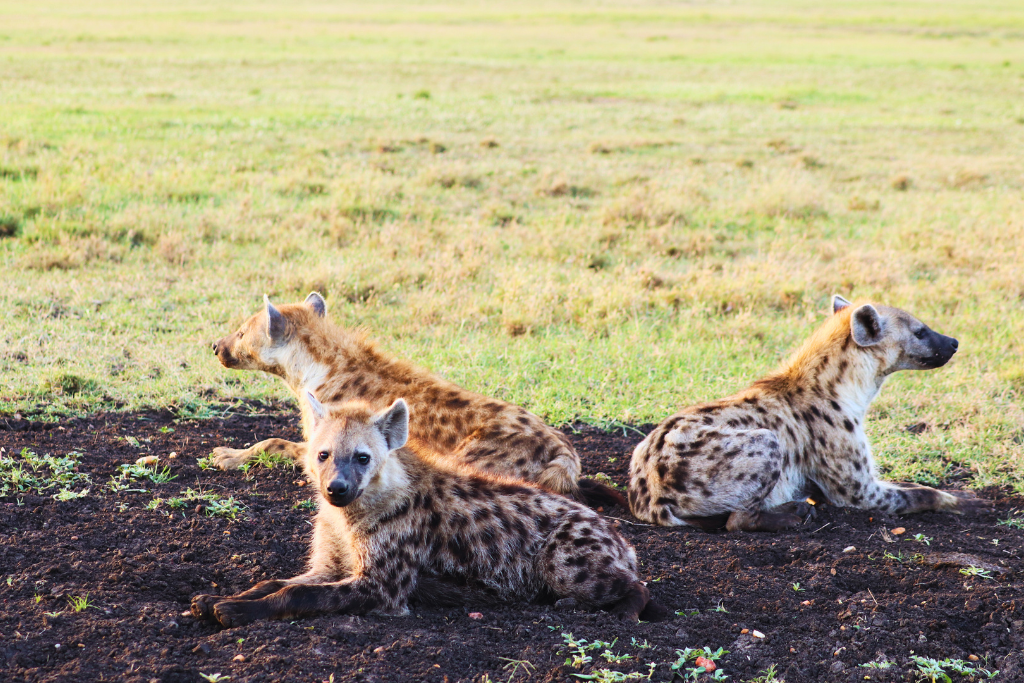
Maasai Mara, or Mara as the locals call it, is a large national game reserve in Narok, Kenya which is contiguous with the Serengeti National Park in Tanzania. It is named in honor of the Maasai people, the ancestral inhabitants of the area, who migrated to the area from the Nile Basin In this place, you will find the best of what nature has to offer as it is a famous and important wildlife conservation and wilderness area in Africa. Mara is renowned for its exceptional populations of lion, leopard, cheetah and African bush elephant. Mara also hosts the yearly Great Migration of wild animals, which secured it as one of the Seven Natural Wonders of Africa, and included in the ten Wonders of the World.
6. Kuang Si Falls, Luang Prabang, Laos
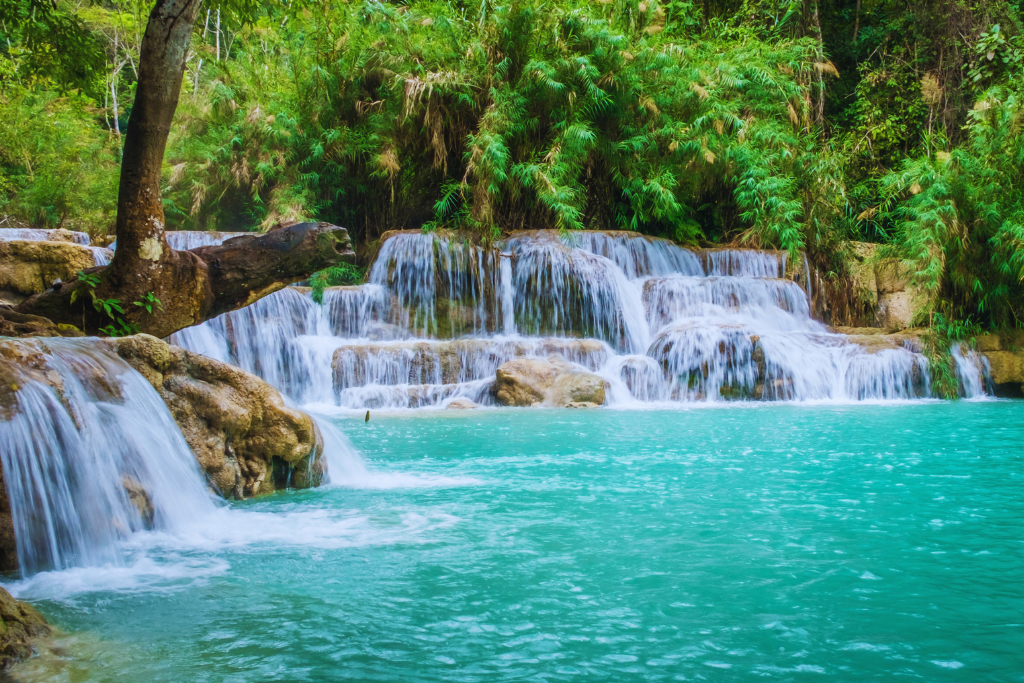
Only when you think you have seen a lot of what nature has to offer, Kuang Si falls in laos prove that the world is an aesthetically crafted beauty. The Kuang Si Falls is a three-tiered waterfall about 29 kilometers (18 mi) south of Luang Prabang. It begins in shallow pools atop a steep hillside, and leads to the main fall with a drop of 60 meters (200 ft) into a turquoise blue pool. The many cascades of Kuang Si are not typical of any waterfall, giving it a unique attractiveness. This is one of those places to bask in the serenity of nature and forget life worries.
5. Great Blue hole, Belize
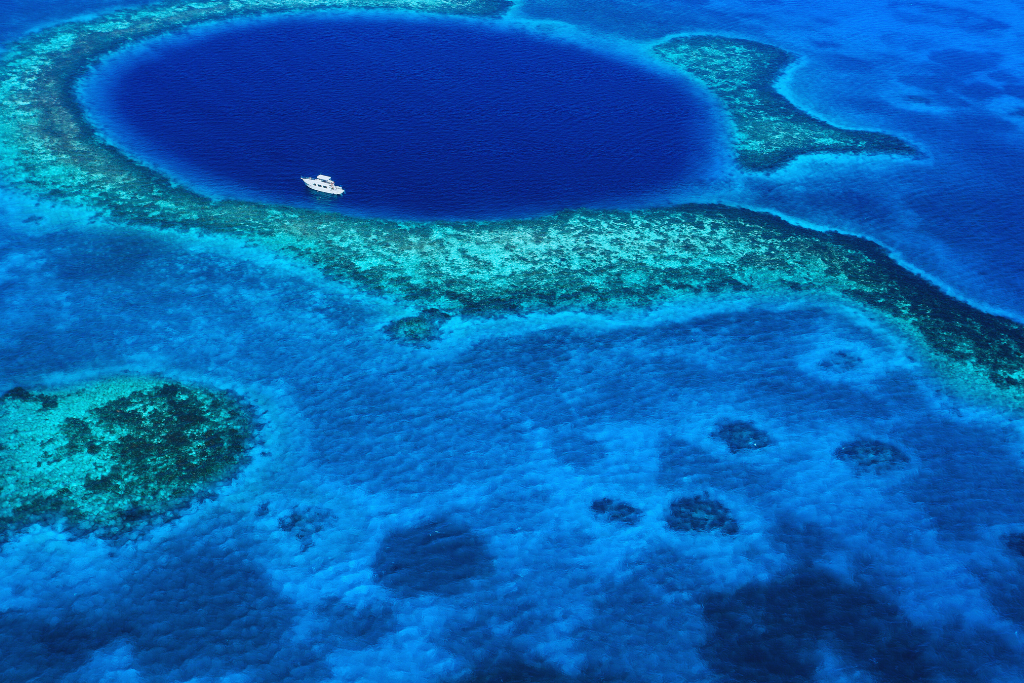
In 1971, Jacques Cousteau, a french naval officer, oceanographer and a cinematographer brought his ship, the Calypso, to the Great Belize hole to chart its depths. He later made the hole famous by declaring it one of the top five scuba diving sites in the world The Great Blue Hole is a giant marine sinkhole off the coast of Belize. It lies near the center of Lighthouse Reef, a small atoll 70 km (43 mi) from the mainland and Belize City. The hole is circular in shape, with a diameter of 318 m (1,043 ft) across and 124 m (407 ft) deep.It was formed during several episodes of quaternary glaciation when sea levels were much lower. As the ocean began to rise again, the cave was flooded. The Great Blue Hole is a part of the larger Belize Barrier Reef Reserve System, a Belize and the Unesco initiative. Since Jacques declaration, the Great Blue Hole has been a popular spot among recreational scuba divers who fancy the opportunity to dive in crystal-clear water and meet several species of fish, including midnight parrotfish, Caribbean reef shark, and other juvenile fish species. species like sharks, and hammerheads, have also been reportedly sighted.
4. Banff National Park, Canada
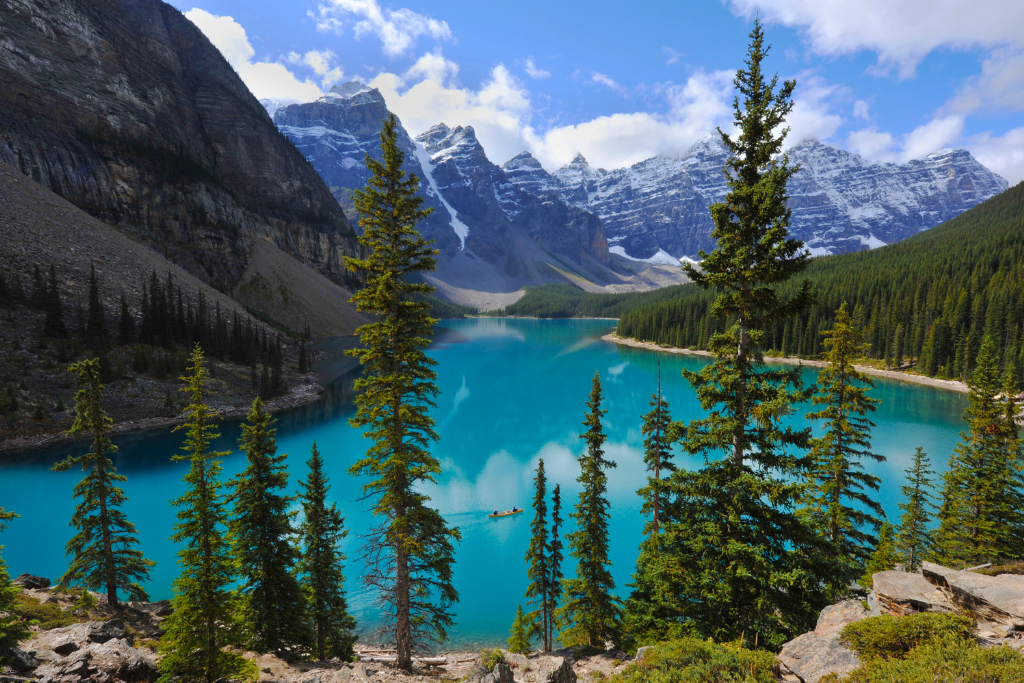
Banff National Park is one of Canada’s most unbelievable tourism hotspots. It is endowed with an intricate setting of mountainous terrains, lakes, many glaciers and icefields, dense coniferous forest, and alpin landscapes With annual tourism visits of over 5 million people, this picturesque place is a treasure that needs adequate protection. The health of the park’s ecosystem has been threatened in recent years. However, In the mid-1990s, Parks Canada responded by initiating a two-year study which resulted in management recommendations and new policies that aim to preserve ecological integrity Banff National Park has a subarctic climate with Mammal species such as the grizzly bear, cougar, wolverine, elk, bighorn sheep and moose, along with hundreds of bird species that call the park home.
3. Kilauea Volcano, Hawaii
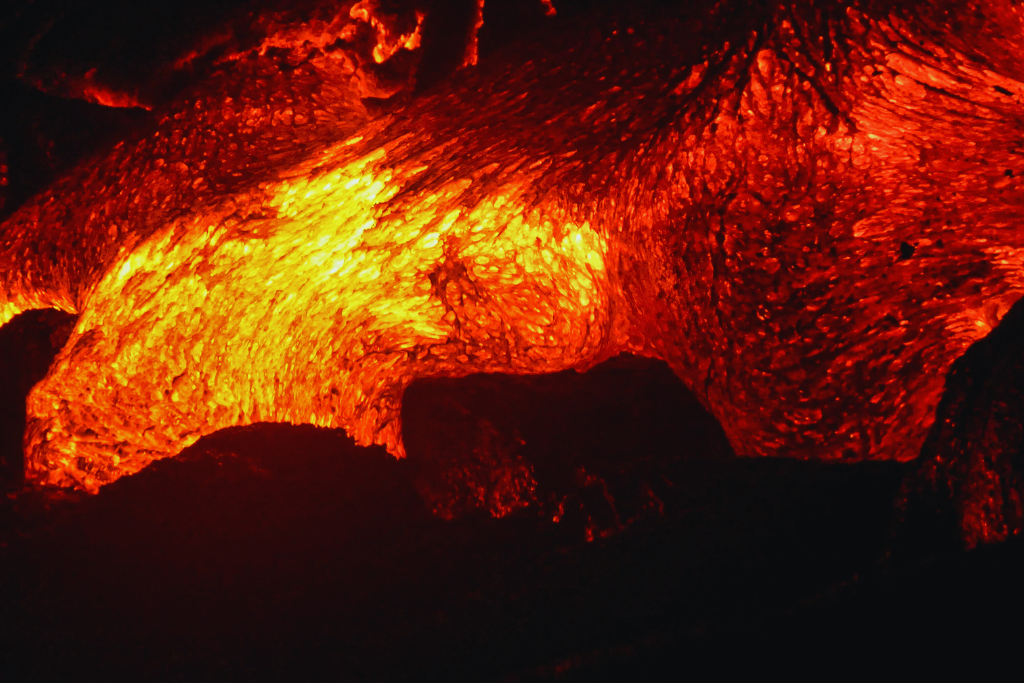
On the big island in Hawaii, you would find Kīlauea volcano, an active shield volcano which is the most active of the five volcanoes that together formed the Hawaii island. The most recent and currently ongoing eruption began on September 29, 2021, when several vents began to erupt lava within a pit crater in the volcano’s summit caldera Kīlauea has erupted nearly continuously from vents on its eastern rift zone between January 1983 and April 2018, causing considerable property damage, including the destruction of the towns of Kalapana and Kaimū along with the community’s renowned black sand beach, in 1990. Recent eruptions saw vigorous eruptive lava fountains that sent destructive rivers of molten rock into the ocean in three places. The eruption destroyed Hawaii’s largest natural freshwater lake, covered substantial portions of Leilani Estates and Lanipuna Gardens, and completely inundated the communities of Kapoho, and extended new land nearly a mile into the sea.
2. Chocolate Hills, Philippines
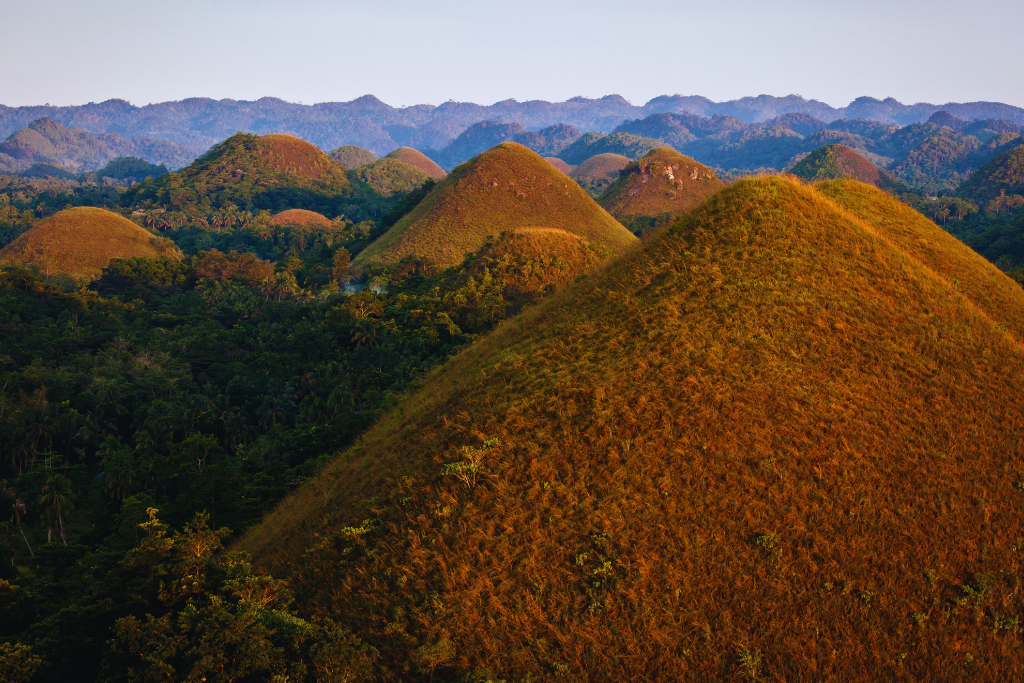
The Chocolate Hills in the Bohol Province of the Philippines form a rolling terrain o haycock-shaped hills that are generally conical and almost symmetrical in shape. There are about 1,776 individual mounds,which are actually made of grass-covered limestone. The domes vary in size from 30 to 50 meters or 98 to 164 ft high with the largest being 120 meters or 390 ft in height During the dry season, the grass-covered hills dry up and turn chocolate brown Scientists believe that the Chocolate Hills of Bohol was formed ages ago by the uplift of coral deposits and the action of rain water and erosion. However, there are other local legends concerning the hills. One legend speaks about a young, strong giant who fell in love with a human girl. When she died, he cried and his tears then petrified and formed the Chocolate Hills. Irrespective of the origin of this beauty, hundreds of thousands of tourists flock to this site each year to experience the surreal nature of chocolate hills.
1. Tsingy de Bemaraha, Madagascar
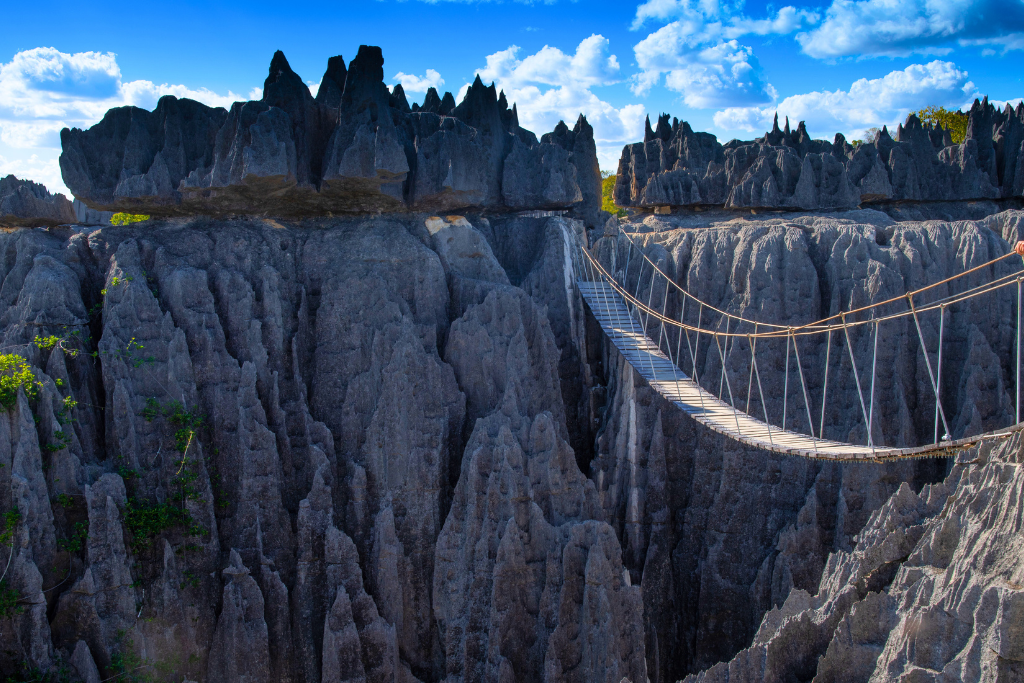
The Tsingy de Bemaraha National Park is a national park located in Melaky Region northwest Madagascar. The national park centers on two geological formations: the Great Tsingy and the Little Tsingy. The Tsingys are karst plateaus in which groundwater has undercut the elevated uplands, and has gouged caverns and fissures into limestone The word tsingy is indigenous to the Malagasy language which can be translated into English as “where one cannot walk


